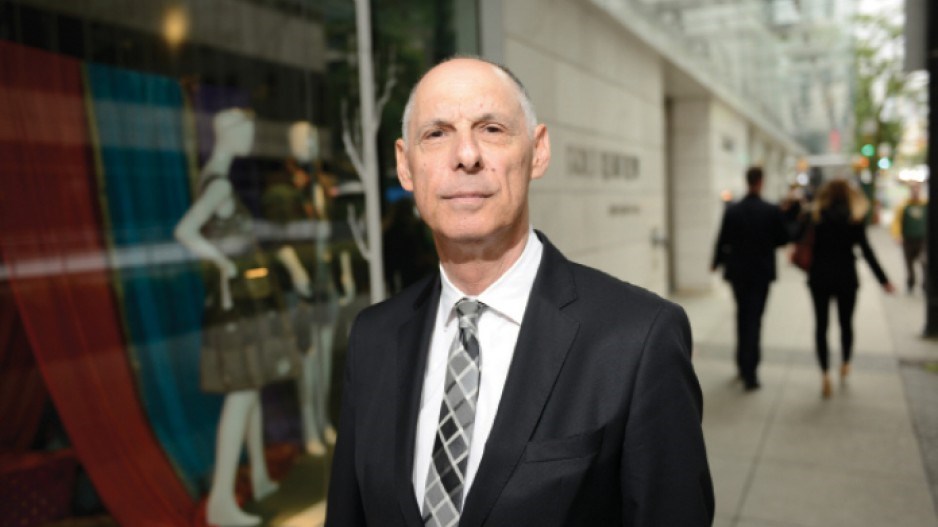New outlet malls are set to shake up Vancouver's retail scene.
Two currently under construction will have stores that are branded with recognizable names but sell merchandise at steep discounts.
Until now, Vancouverites have had to go to the U.S. to find outlet malls that have stores carrying branded clothing from Ralph Lauren, Gucci and Nordstrom but carrying a secondary name such as Polo Ralph Lauren Factory Store.
Higher-end brands are likely to choose to locate their outlet stores at the luxury outlet mall that Vancouver International Airport Authority is developing in partnership with London-based McArthurGlen near the Templeton Canada Line station on Sea Island in Richmond.
That 375,000-square-foot mall is set to open next spring and resemble McArthurGlen's European outlet malls, where brands such as Burberry, Prada, Armani and Michael Kors are prominent.
No tenants have yet been revealed in Richmond.
Farther south, in Tsawwassen, Ivanhoé Cambridge is building a 1.2-million-square-foot mall slated to open in spring 2016. Plans call for half the mall to be filled with outlet tenants and half with regular stores.
John Scott, Ivanhoé Cambridge's vice-president of new development, told Business in Vancouver that Tsawwassen Mills' tenant mix will resemble the other Ivanhoé Cambridge malls that have 50% outlet tenants: Vaughan Mills in Metro Toronto and CrossIron Mills in Calgary.
Mid-market brands such as Banana Republic, Hugo Boss and Ecco Shoes operate outlet stores in each of those hybrid outlet malls.
Tsawwassen Mills' only announced tenant is the fishing, hunting and outdoor equipment seller Bass Pro Shops, which will operate a full-priced store in 145,000 square feet of space.
Scott said 15 other anchor tenants will each take at least 20,000 square feet of space and join more than 180 other tenants in the mall.
Vancouver has lagged behind the rest of North America in having outlet malls and stores.
Guess and Tommy Hilfiger opened some of Metro Vancouver's only outlet stores several years ago in Queensborough Landing, but Vancouverites have otherwise been forced to watch other Canadian cities be the country's pioneers in the outlet shopping niche and to head south to malls such as Seattle Premium Outlets.
Scott told BIV that Ivanhoé Cambridge plans to open a new string of malls in Canada that will be filled exclusively with outlet stores, starting with Niagara Falls, Winnipeg and Edmonton.
“We don't have a mall filled entirely with outlet stores planned for Vancouver,” Scott said. “We believe Tsawwassen Mills, as a hybrid, will provide the outlet complement for us.”
With outlet malls popping up across North America, established fashion retailers are increasingly launching branded chains of outlet stores where their core brand is featured but prices are much lower.
That's why Holt Renfrew is as active expanding its HR2 outlet store brand as Nordstrom is with its Nordstrom Rack and Saks Fifth Avenue is with its Off 5th outlet brand.
Executives believe it is worth the risk of cannibalizing the company's core brand because the new sales channel more than pays for itself, and the shoppers who visit the outlet stores are different consumers from those who shop at the core brand's stores, said Dig360 senior retail consultant and former Hugo Boss Canada vice-president Raymond Shoolman.
Shoolman oversaw Boss' rollout of outlet stores in Canada, which started in 2004. Back then, luxury brands viewed outlet stores as a place to clear out remaindered items and last year's fashions. They now produce fashions specifically for their outlet stores, he said.
“They may use a slightly different material,” Shoolman said. “It doesn't mean a lower-quality material but maybe a lower-priced material. It's about hitting a price point. Maybe there's different stitching or the clothing is designed to use less material.”
This shift toward manufacturing clothing earmarked for outlet stores has fuelled the boom.
Researchers at Value Retail News counted 40 new outlet centres that opened in the U.S. between 2006 and 2014 and only one regional mall that opened during the same time period.




